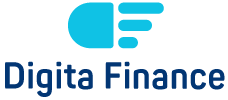The financial world stands at a crossroads. Traditional banking systems that have dominated for centuries now face a revolutionary technology that promises to transform how we handle money. Blockchain technology has emerged as perhaps the most significant innovation in digital finance since the internet itself.
Transforming Financial Infrastructure
At its core, blockchain offers a decentralized ledger system that records transactions across multiple computers. This seemingly simple innovation creates profound implications for financial systems worldwide.
Banks and financial institutions have taken notice. Many have moved beyond initial skepticism to actively exploring blockchain integration within their operations.
The appeal is clear: blockchain can drastically reduce the friction present in current financial systems. Transactions that once required days can now conclude in minutes or seconds.
This speed doesn’t come at the expense of security. In fact, blockchain’s distributed nature makes it exceptionally difficult to compromise compared to centralized systems.
Enhanced Security Through Decentralization
Traditional financial systems typically rely on centralized databases. These create single points of failure that hackers can target.
Blockchain fundamentally changes this security equation. When transaction data exists simultaneously across thousands of computers, compromising the network becomes exponentially more difficult.
According to the World Economic Forum, blockchain technology offers unprecedented security advantages through its cryptographic foundations and distributed verification processes.
Each transaction receives a unique cryptographic signature, creating an immutable record that resists tampering. This feature proves particularly valuable for financial transactions where integrity remains paramount.
Financial Inclusion and Accessibility
Perhaps blockchain’s most transformative potential lies in extending financial services to the unbanked population. Worldwide, approximately 1.7 billion adults lack access to basic financial services.
Blockchain-based financial systems require only an internet connection and a mobile device. This dramatically lowers the barriers to entry compared to traditional banking infrastructure.
At Digitafin, we’ve observed how blockchain technologies can create pathways to financial inclusion for communities previously excluded from the global economy.
Microtransactions become economically viable through blockchain. Traditional payment systems often make small transactions impractical due to fixed processing fees, but blockchain can facilitate transactions of any size efficiently.
Smart Contracts and Automation
Smart contracts represent one of blockchain’s most powerful applications in digital finance. These self-executing contracts contain the terms directly written into code.
The automation smart contracts provide eliminates the need for intermediaries in many financial transactions. Loan processing, insurance claims, and asset transfers can occur automatically when predefined conditions are met.
This automation reduces both costs and the potential for disputes. When contract execution happens programmatically based on verifiable inputs, the ambiguity that often leads to conflicts diminishes significantly.
Financial institutions exploring smart contracts report substantial operational cost reductions. Capgemini’s research suggests banks could save between $3-11 billion annually through blockchain-based automation.
Tokenization of Assets
Blockchain enables the representation of physical assets as digital tokens. This process, known as tokenization, creates new possibilities for asset ownership and transfer.
Real estate, traditionally illiquid and requiring extensive paperwork to transfer, can become divisible and easily tradable through tokenization. Investors might purchase fractional ownership in properties across the globe with minimal friction.
Securities trading similarly stands to benefit. Settlement times can shrink from days to near-instantaneous, while reducing counterparty risks inherent in current systems.
Even traditionally illiquid assets like fine art and collectibles can gain liquidity through blockchain-based tokenization, opening new investment opportunities for average investors.
Regulatory Challenges
Despite its promise, blockchain faces significant regulatory hurdles in the financial sector. Regulators worldwide struggle to develop frameworks that both protect consumers and enable innovation.
The borderless nature of blockchain technology complicates regulation further. Transactions can cross international boundaries instantly, creating jurisdictional questions that lack clear answers.
Financial institutions must navigate an uncertain regulatory landscape when implementing blockchain solutions. This uncertainty often slows adoption as organizations take conservative approaches to avoid potential compliance issues.
Privacy concerns present another regulatory challenge. While blockchain provides transparency, financial regulations often require confidentiality for certain transaction details, creating a tension that needs resolution.
Technical Adoption Barriers
Beyond regulatory challenges, technical limitations continue to affect blockchain adoption in digital finance. Scalability remains a persistent concern for many blockchain networks.
Major blockchain networks still process significantly fewer transactions per second than established payment networks. This throughput limitation restricts blockchain’s applicability for high-volume financial applications.
Energy consumption presents another obstacle, particularly for proof-of-work blockchain systems. The financial sector, increasingly focused on sustainability, must consider the environmental impact of blockchain implementations.
Legacy system integration creates practical challenges as well. Financial institutions have invested heavily in existing infrastructure, making wholesale shifts to blockchain technology financially impractical in many cases.
The Path Forward
Despite these challenges, blockchain continues its advance into digital finance. Hybrid approaches that combine blockchain’s strengths with traditional systems are gaining traction.
Central Bank Digital Currencies (CBDCs) represent one such hybrid approach. These government-backed digital currencies leverage blockchain’s efficiency while maintaining central bank oversight.
Private blockchain networks designed specifically for financial institutions offer another compromise. These systems provide many blockchain benefits while addressing specific regulatory and privacy requirements.
Cross-border payments stand as blockchain’s most immediately promising application. The current system’s inefficiency creates a perfect opportunity for blockchain to demonstrate its value.
Conclusion
Blockchain technology represents both tremendous opportunity and significant challenge for digital finance. Its potential to increase efficiency, enhance security, and expand financial inclusion remains unprecedented.
Yet meaningful adoption requires addressing substantial regulatory, technical, and organizational hurdles. The technology’s transformative potential will only materialize through thoughtful implementation that recognizes both its capabilities and limitations.
Financial institutions that find the right balance – leveraging blockchain where it offers clear advantages while maintaining proven systems elsewhere – will likely emerge as leaders in the next generation of digital finance.
The blockchain revolution in finance has only begun. Its ultimate impact will depend not just on the technology itself, but on how effectively we navigate the complex human, organizational, and regulatory landscapes that surround it.








The Future of Financial Services Across Generations
Digital Wallets vs. Traditional Banking: What Consumers Need to Know
Harnessing AI and Machine Learning for Fraud Detection in Digital Finance
What Is FinTech? A Beginner’s Guide to the Finteching 2025
Embedded Finance: How Seamless Financial Services Are Integrating into Everyday Apps
AI-Powered Credit Scoring: Revolutionizing Digital Lending in the Digital Finance Era
Harnessing AI in Digital Finance: Revolutionizing Risk Management and Customer Experience
How Open Banking APIs Are Revolutionizing Digital Finance?